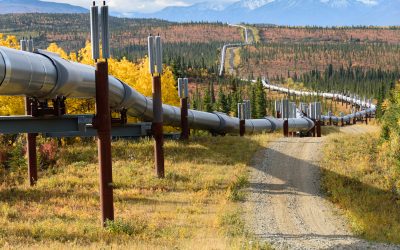Jeffery Simpson must look behind the curtain, tell readers the whole story
Globe and Mail columnist Jeffery Simpson should not so easily accept official dogma on climate change and energy. He also needs to seriously investigate the popular though misguided belief that Canadian fossil fuel companies receive government subsidies.
 Earth’s climate system is too complex for anyone, even award-winning Globe and Mail columnists, to meaningfully forecast the future (click on image to expand).
Earth’s climate system is too complex for anyone, even award-winning Globe and Mail columnists, to meaningfully forecast the future (click on image to expand).
In his excited November 21st column, “The end of the oil world as we know it”, Simpson makes several bold assumptions, none of which are befitting a journalist of his stature:
1 – Just as he did last year when The International Energy Agency (IEA) released it’s 2011 edition of the World Energy Outlook (WEO), Simpson again accepts, without question, the assertions in the 2012 WEO report issued last week. Therein, Simpson uncritically tells us, the IEA claims that the United States will become the world’s largest producer of oil by 2020 and North America a net oil exporter by 2030. He confidently concludes:
“So much for foolishness about the end of oil. So much for the comfortable assumption in Canada that the U.S. would always soak up every drop of oil we could export to them.”
Instead of simply assuming that the IEA’s rosy forecasts are correct, Order of Canada recipient Simpson should properly examine the overly optimistic assumptions that lead the IEA to their conclusions. Of course, one of the major implied assumptions is that opinion leaders such as Simpson will be unsuccessful in their continuing campaign in support of the idea that we must curtail our fossil fuel use to stop a climate crisis.
2 – Simpson repeats, without critique, the IEA’s politically-correct proclamations about climate change. Specifically, he writes, in support of the dangerous anthropogenic (human-caused) global warming (DAGW) hypothesis:
“The resulting emissions will drive the long-term average global temperature increase to 3.6 degrees Celsius.”
“Most ominously, four-fifths of all carbon emissions that are supposed to be allowed by 2035 to keep warming below two degrees Celsius are already locked into power plants, factories and buildings. If strong action is not taken by 2017, all the emissions necessary to keep warming below that level will be locked in.”
Readers need columnists such as Simpson to display appropriate journalistic skepticism about this, the two degrees Celsius “King Canute” clause of U.N. climate agreements. And since he is not personally qualified to make meaningful assertions about such complex scientific topics on his own behalf, Simpson should only be including quotes from experts in the field. Making absolute claims concerning topics in which he has no training is not helpful to the national debate.
Canadians also need prominent commentators like Simpson to balance the excited announcements of climate alarmists with the points of view of experts who do not accept the DAGW hypothesis. Such balanced coverage is the least we can expect of the national affairs columnist for Canada’s supposed “newspaper of record.”
Scientists who specialize in the field tell us that it is ludicrous to think that humans can control the climate of planet Earth as if we had a global thermostat. Climate science is still in its infancy. No one really even knows if global warming or cooling lie ahead, let alone whether or not our CO2 emissions have much impact.
Such uncertainties may not be comforting for journalists who want to make grandiose proclamations about the end of the world but an adult approach recognizes that we have far more yet to discover than we have learned to date. Trying to unravel the causes and consequences of climate change is arguably the most complex science ever tackled. Professors Chris Essex (University of Western Ontario) and Ross McKitrick (University of Guelph) write in their book Taken by Storm,
“Climate is one of the most challenging open problems in modern science. Some knowledgeable scientists believe that the climate problem can never be solved.”
The Nongovernmental International Panel on Climate Change demonstrates that much of what we thought we knew about climate is wrong or highly debatable. As I showed the 1,500 students I taught for the past three years at Carleton University in Ottawa, the science is becoming more unsettled as the field advances. Simpson does not, indeed he cannot, know who is right in the climate science debate.
3 – As to Simpson’s promotion of putting a “A price on carbon, set either by a tax or a cap-and-trade system” in contrast to other vain methods of climate control, this is like discussing whether it is better to hit oneself in the head with a lead pipe or a baseball bat to stop it from raining. They are both painful and accomplish nothing of value.
4 – In the case of so-called “carbon capture and storage” (CCS), it is not known whether such an approach is even possible, let alone whether it is, as Simpson asserts, “helpful”. His admission that CCS is “costly and uncertain” is an understatement.
In their 2007 report, The Future of Coal, researchers at the Massachusetts Institute of Technology concluded that, to determine if sequestration of carbon dioxide (Simpson should know better than to call it “carbon”) is technically feasible on a national basis:
“We estimate that the number of at-scale CCS projects needed is about 3 in the U.S. and about 10 worldwide to cover the range of likely accessible geologies for large scale storage.”
MIT researchers also caution readers:
“no CO2 storage project that is currently operating has the necessary modeling, monitoring, and verification capability to resolve outstanding technical issues, at scale…”
“There is no operational experience with carbon capture from coal plants and certainly not with an integrated sequestration operation.”
Simpson perhaps does not appreciate the scale of the CCS problem. MIT concluded (and this was five years ago):
- If 60% of the CO2 produced from U.S. coal-based power generation were to be captured and compressed to a liquid for geologic sequestration, its volume would about equal the total U.S. oil consumption of 20 million barrels per day.
The U.S. Department of Energy (DOE) explains (2009) that:
“a single 550-megawatt (MW) net output coal-fired power plant capturing 90 percent of the emitted CO2 will need to separate approximately 5 million tons of CO2 per year.”
DOE continues:
“The largest [CCS facility] captures 4 million tons per year. …one of the key barriers to their widespread commercial deployment is the lack of experience with these systems at the appropriate scale at power plants. Currently operating CO2 capture systems in coal-based power plant applications … process about 75,000 to 300,000 tons of CO2 per year [or less than 1/15th the emissions from one 550 MW coal plant].”
“In order to address some of the barriers to widespread commercial deployment of CO2 capture, the DOE plans to conduct several large-scale demonstrations of currently available technologies… total CO2 captured ranges from 0.5 to 3 million tons per year. The demonstrations will be initiated from 2014 to 2016, and the projects will run for two to three years.”
So, Simpson needs to reserve judgment on the “helpfulness” of CCS until at least 2016.
Even if these tests demonstrate that CCS works on a commercially viable scale and even if one accepts the hypothesis that controlling CO2 is needed at all, the technology appears to some experts as worse than useless. For example, Jacobson and Delucchi concluded (Energy Policy, 2010):
“The use of CCS can reduce CO2 emissions from the stacks of coal power plants by 85–90% or more, but it has no effect on CO2 emissions due to the mining and transport of coal; in fact it will increase such emissions and of air pollutants per unit of net delivered power and will increase all ecological, land-use, air-pollution, and water-pollution impacts from coal mining, transport, and processing, because the CCS system requires 25% more energy, thus 25% more coal combustion, than does a system without CCS (IPCC, 2005).”
5 – Finally, Simpson and his fellow climate alarmists in media, government, and environmental groups must stop telling the public that fossil fuel companies receive subsides from the government. In reality, the hydrocarbon fuel sector get tax breaks for certain activities such as exploration.
Here are some basics for future articles by Simpson and his peers:
- The Canadian regime is tax and royalty. Royalty is paid right off the top, with no recognition of costs. And tax is paid on profit, in other words income in excess of costs. Sometimes there are royalty reliefs, for example for deep drilling (or, in the early days, oil sands), when the provincial government wants to encourage activity.
- The oil and gas industry always invest to the max, so any increases in royalties and taxes tend to reduce activity, something that would cost governments, and so all Canadians, dearly in lost revenue.
- Recall the Alberta “Our Fair Share“, which hiked royalty rates in 2007? It seriously damaged the industry and it still has not recovered, even though the government later reduced the royalties to lower than before.
If oil companies were receiving real subsidies because they were fundamentally uneconomic, Canada’s economy would probably have failed long ago – it is the taxes and royalties from the oil industry that help to keep Canada financially afloat. In fact, for many countries, Canada included, the taxes and royalties oil companies pay to governments are the major source of income. As explained above, they pay tax on gross income minus legitimate expenses. The typical “green” hypothesis that Simpson seems to have fallen for is that these expenses, leading to tax refunds, are the same as subsidies. This is completely wrong, of course.
ICSC Energy Issues Advisor, engineer Bryan Leyland of New Zealand explains:
“Allowing for legitimate research expenses is nothing like the huge, life-of-project subsidies they demand to make wind and solar projects and other renewable energy projects profitable. On one hand their proponents claim that they will be profitable in a few years. On the other hand they demand guaranteed subsidies for 20 or more years thus demonstrating that they don’t believe their own propaganda.”
Leyland concludes:
“All of these inefficient technologies [wind, solar, etc.] are technically mature but nowhere near being commercially viable. All subsidies for mature technologies are wrong. Let the market decide!”
Unlike wind and solar power companies that really do receive huge government subsidies, for countries like Canada there is a massive net flow of funds from fossil fuel energy companies to the government. Indeed, Alberta’s fossil fuel sector subsidizes much of Canada’s social and other programs across the country.
Simpson must open his eyes to climate and energy realities when he next writes about this crucially important topic.
_______________
Tom Harris is Executive Director of the International Climate Science Coalition, and a Research Fellow to the Frontier Centre for Public Policy in Winnipeg, Manitoba, Canada.


